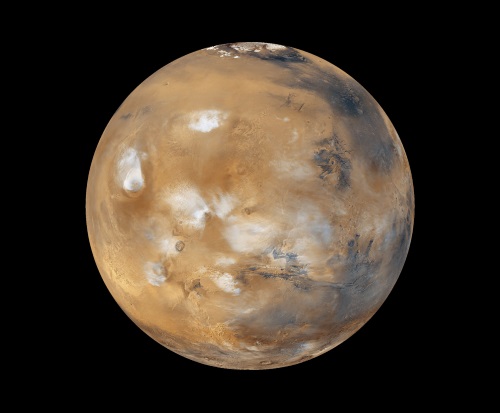In five years, the planets will align, allowing for a unique opportunity to travel to Mars and back to Earth in just 501 days. This opportunity only presents itself every 15 years. The Inspiration Mars Foundation jumped on this prospect and plans to send two people (preferably a married couple) to Mars on January 5, 2018.

Mars. (Image via NASA)
The fly-by mission poses risks, just like any other kind of space exploration mission, but what Inspiration Mars is really afraid of is cosmic radiation.
How do they plan to black the dangerous rays? With human poo, of course.

Illustration of cosmic rays penetrating the Earth. (Image via Simon Swordy, University of Chicago, NASA)
“It's a little queasy sounding, but there's no place for that material to go, and it makes great radiation shielding,” Taber MacCallum, chief technology officer of the Inspiration Mars team, told New Scientist.
The plan is to dehydrate the feces as much as possible (so that the liquid can be reused) and then bag up the matter and line the bags against the wall of the spacecraft. McCallum also told New Scientist that food will be stored along the walls too because that also acts as a good radiation shield.
Another concept the company is considering is called Water Walls. This project combines life-support and waste-processing while creating radiation shielding. In this venture, the Water Walls team uses water as a shield against cosmic radiation, but also for drinking purposes. The scientists are developing a way to extract clean drinking water from urine and feces using polyethylene bags.
The developers will continue to work out the kinks in this project though. During 2011 testing, it was determined that this process was 50% less effective in lower-gravity conditions than on the ground.
Feces and water will not be Inspiration Mars' only line of defense against cosmic rays. The spacecraft will be equipped with an external water tank and aluminum skin.
Learn more about the Inspiration Mars Foundation.
[Story via New Scientist]
Advertisement





